The lineout
The lineout is a means of restarting the game after the ball, or a player carrying the ball, crosses the touchline. The opponents of the team who last held or touched the ball, prior to it going out of play, throw the ball into the lineout. To win possession, any player in the lineout can jump for the ball, supported in the jump by two team-mates. The team throwing in the ball has the advantage since they can call a code that alerts their team mates to the destination of the throw. After the ball is caught, the ball can be passed to the scrum half for further distribution or a maul can develop. The option chosen may depend on field position. The age at which players may be supported can vary per Union. All should make themselves aware of the differences.
Law definition
The purpose of the lineout is to restart play quickly, safely and fairly, after the ball has gone into touch, using a throw-in between two lines of players.
Key points for players
General points
- All players should ideally be able to be jumpers and supporters
- Players can change roles (jumper/supporters) and position during the lineout
- The performance of the thrower is key to a successful lineout
- Players must communicate to ensure a safe and effective lineout
Jumper
- Starting position:
| Chest and hands up | Bend knees |
|
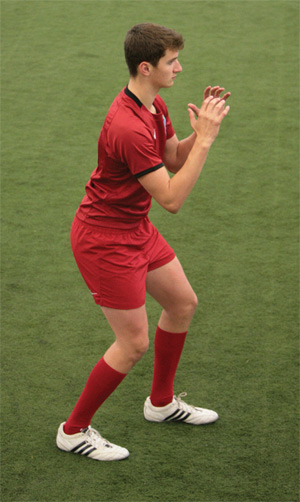 |
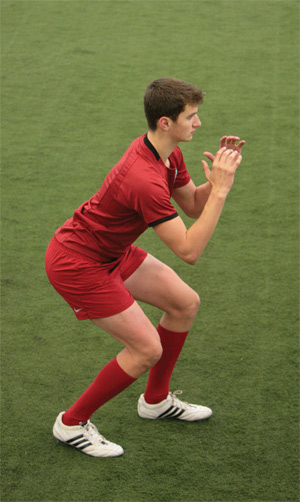 |
 |
|
|
|
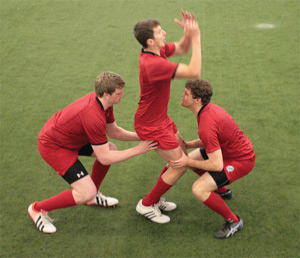 |
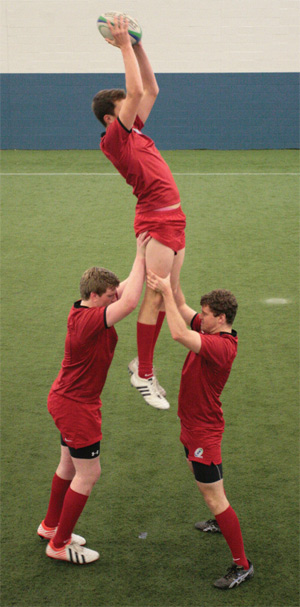 |
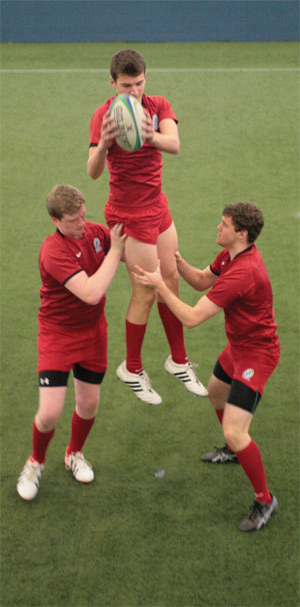 |
- Make a two-footed landing and bend at the knees
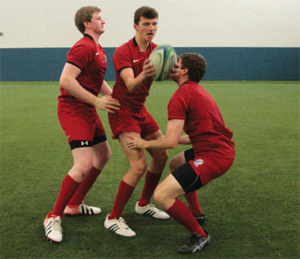
Lineout safety:
- Players must not do anything to intentionally destabilise a player in the air
- Players must not do anything to intentionally destabilise a player who is supporting a player in the air
- Support players are responsible for the players in the air and bringing them to ground safely
Support players
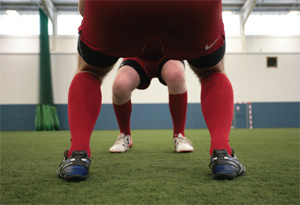
- Move with the jumper into space
- Form a stable, wide base, with feet shoulder width apart
- Adopt a squat position with a flat back, bend at the knees and keep the chest up
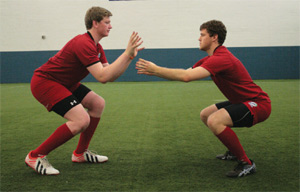
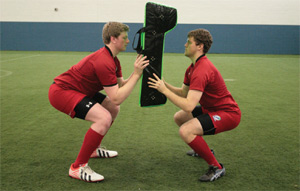
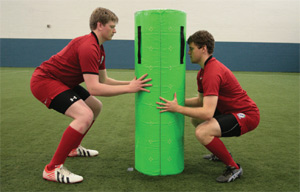
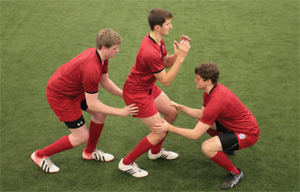
- Grip with palms towards jumper and fingers open
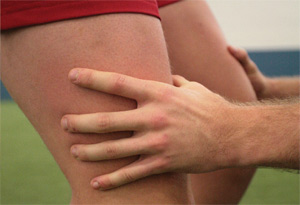 |
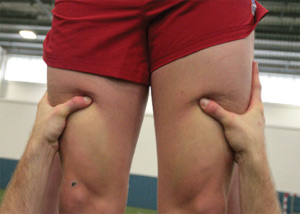 |
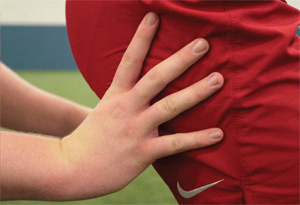 |
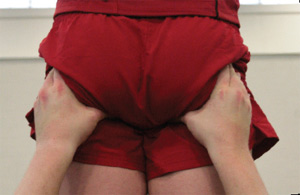 |
| Front lifter | Back lifter | ||
- Support the jumper with leg drive and locked arms
- Push together on the jumper to support the jumper
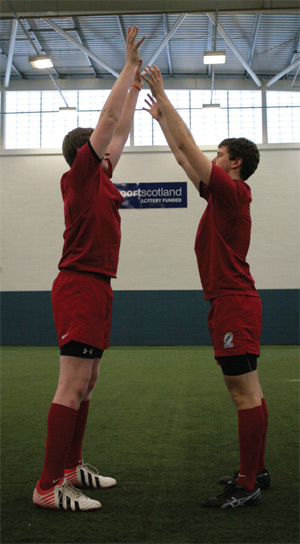 |
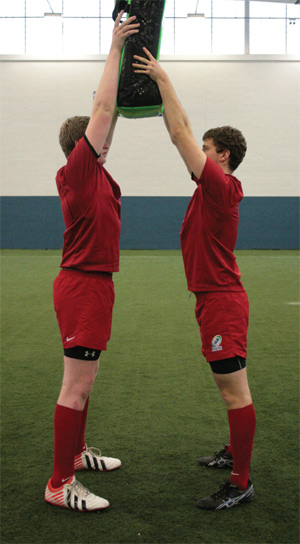 |
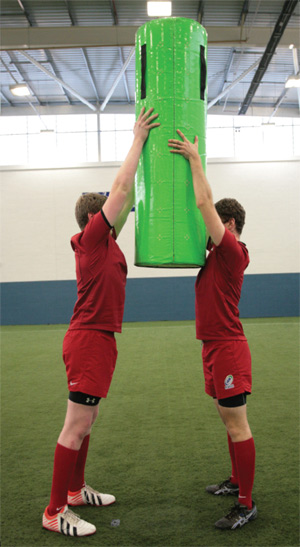 |
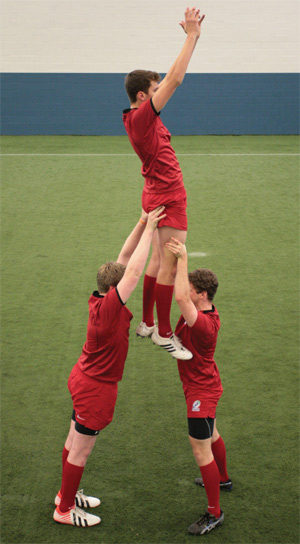 |
- Ensure the jumper is returned to the ground safely and under
control without moving into a position which obstructs/blocks the opposition
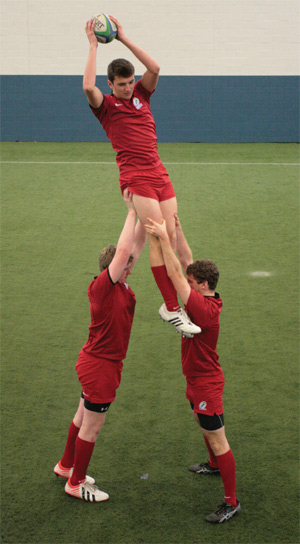 |
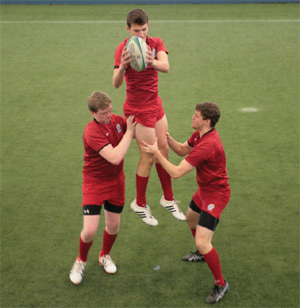 |
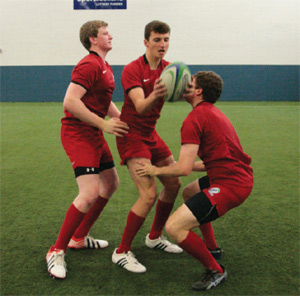 |
Coaching tips
- Use progressions to ensure safety
- Start with support players lifting rucking pads and tackle bags to build technique and coordination
- Ensure support players are using the legs rather than the back to support the jumper
- Work with jumpers to ensure they maintain a strong, long body position throughout the jump
- Focus on developing the speed and coordination of each jumper/support group
- Ensure the thrower practises individual skill
- Challenge the jumper to perform different distribution options after the catch
Referee tips
Check that:
- The lineout is formed with two straight lines, each 0.5m from the mark
- The ball is thrown in straight between the two lines
- Jumpers are correctly supported in the lineout and brought safely back to the ground (players not being abandoned in mid air).
- Players not participating in the lineout retire behind the 10-metre offside line
Watch for:
- Players intentionally destabilising players in the air
- Players destabilising the support players who are holding players in the air
- Players closing the space between the two lines illegally
- Players who lever on an opponent
- Players holding or shoving an opponent
- Players illegally charging an opponent
- Support players moving to obstruct the opposition